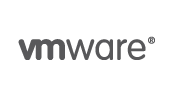Ok so you took the plunge and are running some version of VMware. Now you want to squeeze every bit of performance out of your hardware possible. In a previous post we went over changing your scsi controller to a para virtual adaptor fit hat is optimized for vm performance. Next up your network adaptor! VMware comes with 3 types e1000, vmxnet 2 advanced, and vmxnet3. I prefer vmxnet 3 as it is optimized for vm operation and has a lot of advanced features. Only drawback is there are no native drivers in windows for it. you have to mount a vm floppy to install them or have VMware tools installed on the is to install the drivers. This link will explain the differences between the types https://kb.vmware.com/selfservice/microsites/search.do?language=en_US&cmd=displayKC&externalId=1001805
here are the instructions on how to change your adaptor type:
I would like to share how to change virtual machine virtual network adapter manually. In fact, you may know you can add a new virtual adapter and choose the adapter type from drop down menu.
# VMXNET — The VMXNET virtual network adapter has no physical counterpart. VMXNET is optimized for performance in a virtual machine. Because operating system vendors do not provide built-in drivers for this card, you must install VMware Tools to have a driver for the VMXNET network adapter available. # Flexible — The Flexible network adapter identifies itself as a Vlance adapter when a virtual machine boots, but initializes itself and functions as either a Vlance or a VMXNET adapter, depending on which driver initializes it. With VMware Tools installed, the VMXNET driver changes the Vlance adapter to the higher performance VMXNET adapter. # E1000 — An emulated version of the Intel 82545EM Gigabit Ethernet NIC, with drivers available in most newer guest operating systems, including Windows XP and later and Linux versions 2.4.19 and later. # VMXNET 2 (Enhanced) — The VMXNET 2 adapter is based on the VMXNET adapter but provides some high-performance features commonly used on modern networks, such as jumbo frames and hardware offloads. This virtual network adapter is available only for some guest operating systems on ESX/ESXi 3.5 and later. 4. Edit Virtual Machine vmx file and choose virtual network adapter as show below:
5. Save the VMX file and power on your virtual machine.

